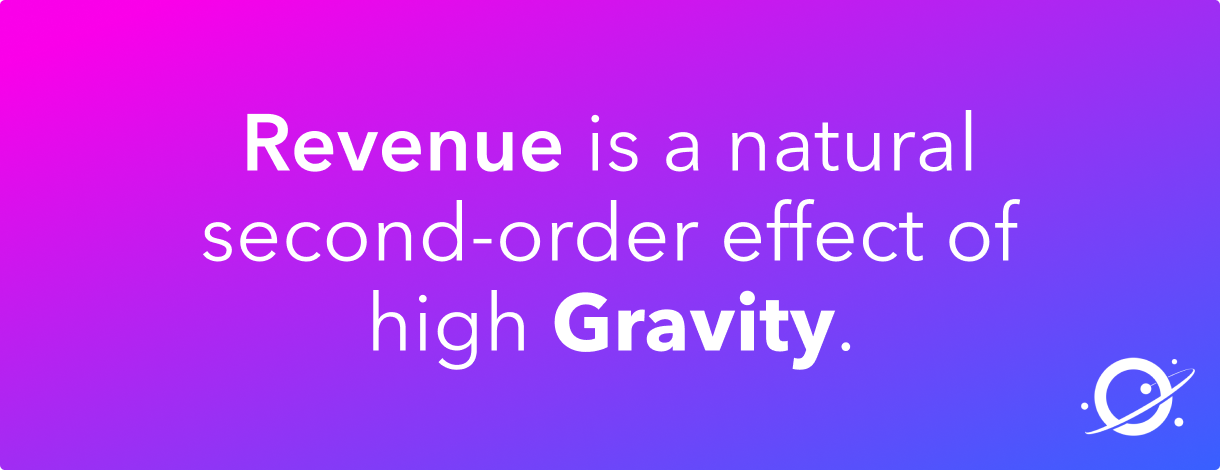What’s Your Community’s NRG?
A new SaaS metric for demonstrating the ROI of community.

Patrick Woods
April 24, 2020
Many DevRel and community teams struggle to demonstrate how their activity impacts key metrics, like revenue.
We recently learned of a new SaaS metric proposed by OpenView Partners that we think can help, since it can contextualize the results of community activity within a broader business situation, and help show the impact of community on business growth.
It’s called Natural Rate of Growth (NRG), and it’s essentially, “how fast a company grows without even trying—before layering on incremental investments in sales and marketing.” Here’s the equation:
NRG = 100 x Annual Growth Rate x % Organic Signups X % ARR from ProductsIn other words, if your company immediately halted paid search, banner ads, outbound efforts of the sales team, and big marketing campaigns, how much and how quickly growth increase?
As it turns out, many companies are asking this very question, which creates the perfect opportunity for DevRel and community teams to shine by influencing NRG.
NRG exists to measure a product's ability to grow through a combination of non-paid traffic and product-centric upsells, like inviting teammates and upgrading one’s plan. These are areas community teams already influence, but most don’t have a great way to communicate the impact of their effort. We think NRG is one way to tell the story.
So how can a company drive more organic signups and ARR from products?
Community drives NRG
At Orbit, we think one way community delivers business value through the generation of organic signups, which has the side effect of driving ARR from products.
If you have a high gravity community with engaged and passionate users, they’ll continue engaging with each other whether or not your company is actively participating.
Just look at Airtable’s community forum. It sees hundreds of posts per week, with the vast majority of engagement coming from non-Airtable community members. If the Airtable team stopped replying to messages for a month, the community would continue to operate.
Search engines would continue indexing discussions that happen there, and other users would continue to find helpful community-generated content. That content would drive more usage, and lead to deeper product usage and interest in paid features, like Blocks, leading to in-product upgrades. In other words, NRG would increase.
If community drives growth, how can you increase and measure and expand your community?
Gravity helps measure a community’s growth
In the Orbit Model, Gravity is the attractive force of a community that acts to retain existing members and pull in new ones, and we think it’s a key top-level metric company leadership should track.
It’s based on reach and love, so an increase in gravity means two things.
First, it means the community has increased its ability to drive awareness about the community and the product it's built around (Reach). Second, it means the community has increased its level of activity, through PRs, content creation, active discussions, and more (Love).
When a community's influence and activity increase, so does its gravity.
Gravity, NRG, and revenue
So what about key SaaS metrics, like revenue and NRG?
Revenue is the end goal, but if community teams try to influence revenue directly, they risk alienating users with sales-centric tactics. Gravity will drop as everyone leaves the community.

For most communities, revenue is a natural second-order effect of high gravity. Just think of an ice cream cone. The larger the scoop on top of the cone, the more ice cream that drips down. With communities, as gravity increases, more users will end up in the adoption funnel.
That means DevRel and communities teams should focus on growing the Reach and Love of their community, leading to higher gravity, which then leads to more organic signups.
In most cases, higher gravity leads to more organic signups which leads to increased revenue.
We think one effective way to demonstrate the impact of community activities, then, is by calculating NRG and showing how community and DevRel contribute.
As a result, we think DevRel leadership should consider NRG as a metric it reports on, and clearly demonstrate how community and DevRel investments move this important metric.
You might also like:
- Why Orbit is Better Than Funnel for Developer Relations
- DevRel teams need tools and models created specifically for our discipline, and not just those adopted from other fields.
- Slack vs Discord vs Discourse: The best tool for your community
- An in-depth comparison of 3 top community platforms across dozens of factors.
- How we use Orbit to build Orbit
- A guide to how we use our product to build our community.

